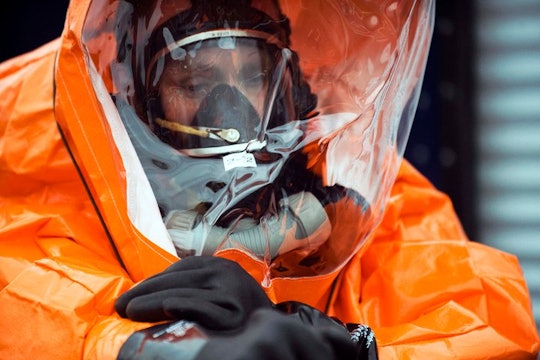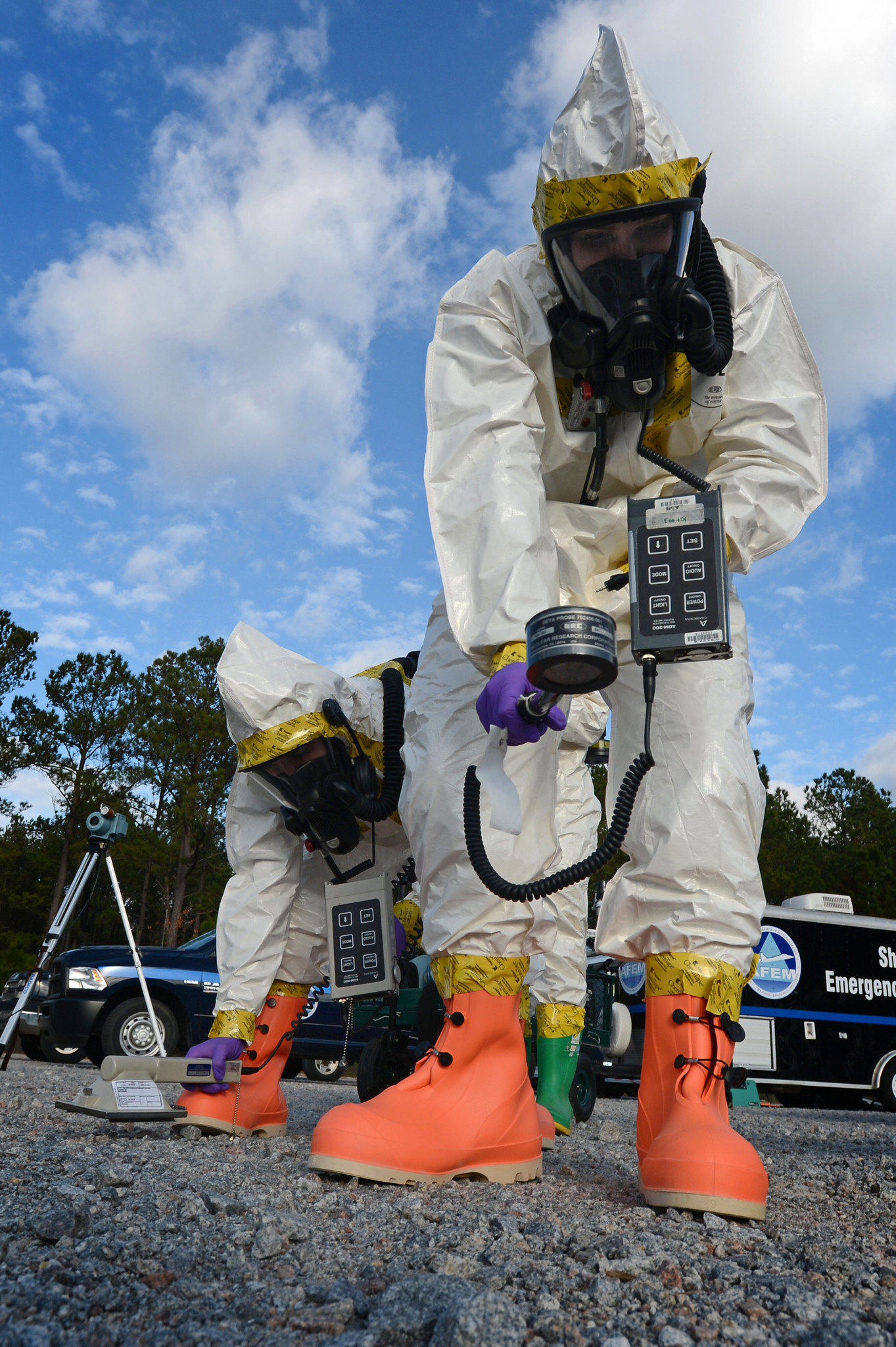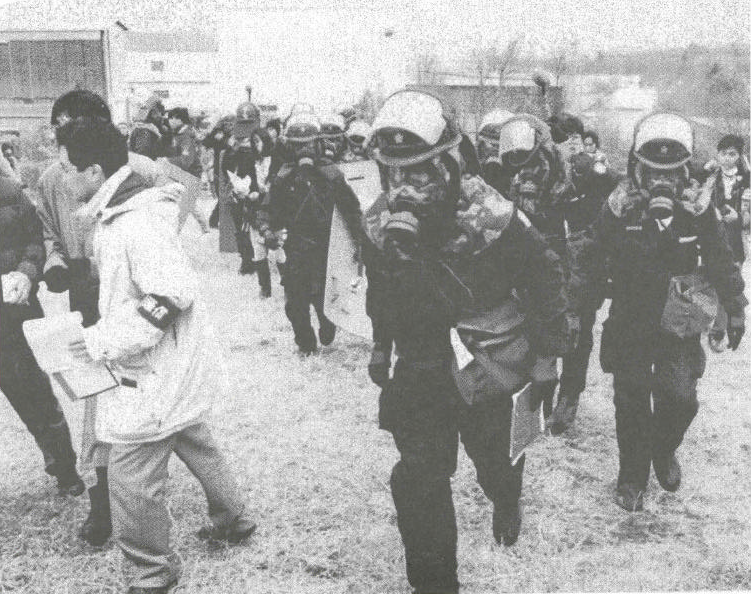
National Guard
A smart ‘second skin’ shape-shifts to block out chemical weapons
The smart fabric made of carbon nanotubes is light, breathable, and can change how first-responders deal with sarin
When Carlos Valdez doubles up on purple gloves at Lawrence Livermore National Lab, it’s for good reason: he is making, handling, and testing sarin — a chemical weapon.
He works in a dedicated fume hood with a coworker nearby. “There’s always those extra layers of protection,” says Valdez, a chemist at the national lab.
For those working in war zones poisoned with sarin gas, protective clothing is everything. The invisible chemical weapon is odorless and frequently lethal, so traditional PPE is heavy and non-breathable. But for first responders and soldiers most likely to encounter chemical weapons in chaotic moments, heavy and non-breathable are dangerous.
“If you are wearing protective suits, you typically have to limit usage to an hour or so before your body temperature spikes to a dangerous level,” says Francesco Fornasiero, a staff scientist in chemical engineering at Lawrence Livermore. “In a worst-case scenario, you could get heatstroke.”
Fornasiero says these life-or-death situations need new, smart materials that can sense a threat like sarin, and respond automatically to block it out. In research published recently in Advanced Functional Materials, scientists at MIT and Lawrence Livermore National Lab have invented precisely that.

“If you are wearing protective suits, you typically have to limit usage to an hour or so before your body temperature spikes to a dangerous level" - Fornasiero
US Air Force
Sarin is an organophosphate chemical weapon banned from war under the Geneva Protocols. Its chemical structure is similar to many insecticides, but it is far more dangerous. Small doses can interfere with the chemical signals between nerves, causing sweating and twitchy muscles. If the molecule reaches the lungs, though, it can be fatal. Scientists estimate the lethal dose at less than one milligram -- about 30,000 doses that size could fit inside a shot-glass.
Sarin nerve gas can also permeate through the skin, says Fornasiero. That is why protective suits need to protect the entire body. But sarin gas molecules are small and agile. Each bonded bundle of atoms is hundreds of times smaller than the pores on an N95 mask; each odorless iota lighter than the molecules that radiate the smell of garlic.
Barricading against such minuscule invaders means severely restricting a material’s breathability. And therein lies the problem for first-responders: How can a material be ruthlessly discerning without overheating?
The answer, Fornasiero says, is a thin, breathable membrane fabric made of carbon nanotubes. The nanotubes, a mainstay in Department of Defense-funded research because of their lightness and durability, are capped with a specially designed polymer that shape-shifts as soon as it senses a chemical weapon. That shape-shifting temporarily closes off the tiny pores automatically.
Fornasiero likens the shape-shifting polymers lined up at the outer edge of the material’s nanopores to sticky strings. Under normal conditions, air and water vapor travel freely through the pores and past the upright strings. But when sarin is around, the strings interact with the organophosphate’s distinct chemistry, causing them to contort and stick to each other. That collapse of strings clogs up the pores, preventing sarin from entering.
Valdez, who has worked with sarin for many years, tested the carbon nanotube material against the nerve agent. In their study, Fornasiero and Valdez’s team shows that the material reacts “nearly instantaneously” to close off the membrane and protect the person exposed. And since it’s light and reacts automatically, first-responders can wear it and keep it on without risking overheating. An added bonus, Valdez says, is that these materials can also change color after coming in contact with sarin. That sensing ability would be an especially important notification system when dealing with a clear, odorless gas.
Right now, the material is particularly sensitive to sarin, but not suitable for protecting against other chemical weapon threats, such as soman.

Tokyo sarin subway attacks
Wikimedia CC 2.0
“Soman is a hard one,” Valdez says. “If you get hit with soman, you basically have less than four minutes to inject yourself with the antidote” before you seize, stop breathing, or die.
Part of the challenge will be designing one fabric that’s flexible enough to recognize and block out multiple nerve agents. In a real exposure scenario, you never know which threat is around. “What we’re working on right now is to have, in the same layer, the ability to respond to multiple types of chemicals,” says Fornasiero.
“Ideally, you could wear it all of the time as it would be your standard uniform,” says Fornasiero. If you enter a contaminated environment without knowing it, “you would be automatically protected.” In any case, whether the smart fabrics protect against one threat or several, actually implementing the technology in practice will take years of administrative hurdles and technology demonstrations. Scaling up to meet the demands of an army may also be an issue.
In the meantime, protection from sarin will continue to depend on classic PPE and rigorous safety protocols. “When I started ten years ago, I was a little worried about what I was working with...I used to get nervous,” Valdez says. Now, he says, he’s comfortable working with it. With the team’s work on smart fabrics, first-responders may one day feel more safe and comfortable too.
